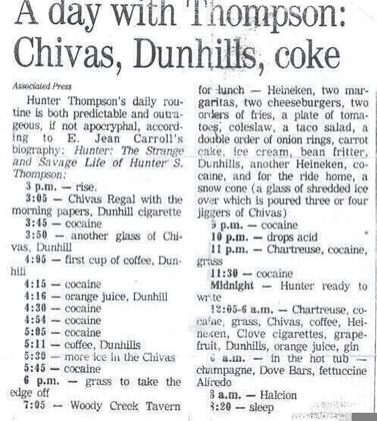Posts Tagged ‘1970s’
Jimmy Savile all over an underage Coleen Nolan in 1979
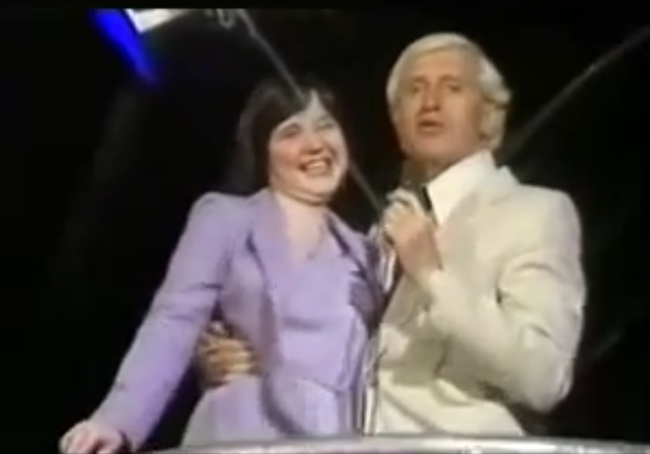
Former Nolan Sister singer Coleen Nolan says paedophile BBC DJ and TV ‘personality’ Jimmy Savile invited her to his hotel when she was 14. The Nolans had been on BBC TV’s Top of The Pops in 1979 when the man who died innocent and blameless before being outed as a prolific child rapist promised to “look after her”. Nolan thought Savile a “dirty old man” and declined. “I’ve got four sisters on the stage that would have beaten the crap out of him.”
Here’s the footage of Savile hiding in full view – at the 4-minute mark:
Posted: 18th, March 2021 | In: Celebrities, Key Posts, Music, News, TV & Radio | Comment
Brilliant trippy Hanna-Barbera anti-drug PSA, ca. 1970 by Art Babbitt

Incredible psychedelic Hanna-Barbera anti-drug PSA, ca. 1970. The ad was created by Art Babbitt – he’d developed Goofy during his time at Disney.
Arthur Harold Babitsky (October 8, 1907 – March 4, 1992), better known as Art Babbitt, was an American animator, best known for his work at Walt Disney Animation Studios. He received over 80 awards as an animation director and animator, and also developed the character of Goofy. Babbitt worked as an animator or animation director on films such as Snow White and the Seven Dwarfs, Pinocchio, Fantasia and Dumbo, among others.

Posted: 12th, November 2020 | In: TV & Radio | Comment
Music from 1970s sex films
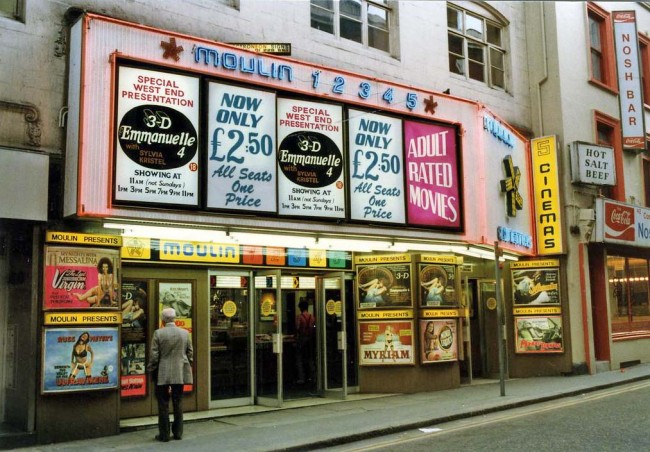
We only read Playboy for the articles (which since Hugh ‘Housecoat’ Hefner’s throbbing organ swore off naked women is truer than ever), and we only watch vintage skin flicks for the music. French music producer Drixxxe has made compilation tapes of ‘70s softcore pornographic films. Called Sextape (natch.) you can tune in to them all on Flashbak.
SEXTAPE 1
Sextapes: A Selection of Vintage Erotic & Porn Movie Soundtracks
Posted: 28th, October 2015 | In: Film, NSFW, Reviews | Comment
The Day of the Animals: The 5 Strangest ‘Revenge-of-Nature’ Movies of the 1970s
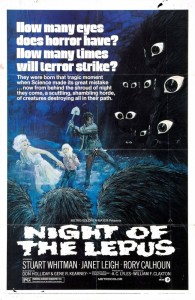
IT’S not nice to fool with Mother Nature.
In the seventies, science fiction and horror filmmakers were certain that mankind was going to soon face his comeuppance for polluting and over-populating Mother Earth. And more so, that this comeuppance was going to be delivered at the paws, claws, talons, webbed fingers, and teeth of our former friends: the animals.
Call it the Circle of Death.
Between 1970 and 1979, more than a dozen genre films involved Mother Nature striking back against man for his mis-use of pesticides, his damage of the ozone layer, and for polluting previously unspoiled terrain.
Read the rest of this entry »
Posted: 30th, June 2014 | In: Film, Flashback | Comment (1)
Guilty Pleasures: 5 Musicians Of The 70s You’re Supposed To Hate (But Secretly Love)
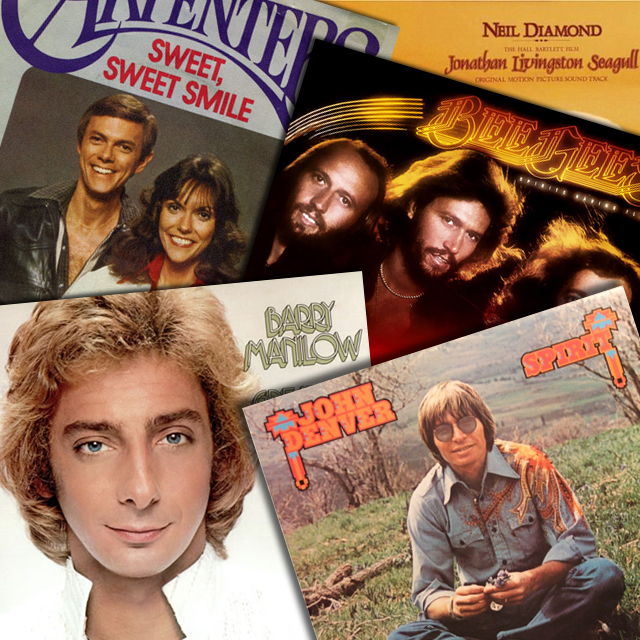
1. The Carpenters
Everyone remembers that scene in Tommy Boy where Farley and Spade declare their distaste for The Carpenters. After all, The Carpenters are “lame”. Only the biggest loser would actually like The Carpenters.
Fast forward a bit, and they’re singing their little hearts out to “Superstar”….
The fact is, The Carpenters are awesome. I’ll admit it. I’ll also admit to 4 others… but don’t let me stand alone. Join me in pronouncing once-and-for-all that it’s “okay” to love these artists. Don’t carry these secrets with you any longer. Shout it from the rooftops. Your soul shall be cleansed.
2. Barry Manilow
In similar fashion to Tommy Boy, there’s a scene of sweet release in Family Guy. After a news report on Barry Manilow airs, the gang at the bar vigorously denounces the singer, but can’t contain their shameful secret for long. Within moments, all four giddily come out of the Manilow closet…
They end up drifting into Manilow’s “Ready to Take a Chance Again”, as well they should. Manilow rules.
3. John Denver
I remember when the Silver Fox (Charlie Rich) protested John Denver’s award at the CMA’s by literally lighting the ballot on fire on live television.
The incident made Rich look like a drunken douchebag, but the damage had been done; Denver had been publicly denounced. He wasn’t accepted in the country genre, and he definitely had no friends in the rock world. Denver’s cool points equaled zero.
Yet, all this derision was unfounded. Denver wrote about the Earth and an appreciation for the natural world better than anyone. While most bands of the Seventies were singing about f***ing, Denver was singing about the inner peace one only can find deep in the woods.
Sure, he didn’t look as cool as Ritchie Blackmoore twirling his guitar or Robert Plant thrusting his junk every which way… but must we always have the twirling and the thrusting? Sometimes it’s okay to just take the rock theatrics down a peg, and just stand there and sing your songs.
4. Bee Gees
I think we may have reached a point in our society where it’s okay to admit to liking the Bee Gees. However, for a couple decades after the fall of disco, you didn’t dare. In fact, Barry Gibb had to literally go undercover to write his music. You didn’t know Kenny Rogers (“Islands in the Stream”) or Dionne Warwick (“Heartbreaker”) were singing Gibb tunes, but they were. The Bee Gees were, frankly, too reviled to dare release these songs.
But, damn, Barry effing OWNED the late Seventies…
Starting in 1976, when Gibb discovered his flair for the falsetto on “Nights on Broadway” it was off to the motherf***ing races. He gave a few gems to his brother Andy (“I Just Want to Be Your Everything”) then the trio released “Jive Talking” and a string of hits that would continue unabated until 1980. The Gibb’s made the Billboard charts their bitch for about 4 straight years.
Barry was a hitmaker for everyone: With Streisand (“Guilty”), Samantha Sang (“Emotion”), Yvonne Elliman (“If I Can’t Have You”), Frankie Valli (The theme song for Grease) and Andy (“(Our Love) Don’t Throw It All Away”, “Shadow Dancing”, and “(Love Is) Thicker Than Water”).
Add in the hits he recorded with the Bee Gees, and it’s truly astounding. In 1978, the Bee Gees owned 5 of the US Top 10 (a chart dominance not seen since The Beatles in ’64), and Barry became the only person to ever record 4 consecutive US number one hits.
Then came the disco backlash and the Brothers Gibb were the prime casualties. True, their massive Sgt. Pepper fail didn’t do them any favors, but the venom they received was undeserved. They were the poster boys of disco, and disco was considered an embarrassment for many years to come.
Well, I say “no longer”.
5. Neil Diamond
Poor Neil has never been cool. But like Manilow, he had a following in the 70s almost exclusively consisting of white thirtysomething females, which certainly didn’t add to his street cred. Wear a Neil Diamond concert shirt to school, and expect to be punched repeatedly in the nuts. Schoolmates didn’t take kindly to public expressions of Diamond fandom.
Diamond’s early hits were respectable enough “I’m a Believer” and “A Little Bit Me, A Little Bit You” became hits for the Monkees, and Diamond followed them up with count’em 10 number one hits in the US. “Cracklin’ Rosie”, “Cherry, Cherry”, “Sweet Caroline”, “Song Sung Blue”, “Red Red Wine” and “Solitary Man” are all stellar.
The problem is, Diamond jumped the shark. Somewhere along the way, he started dressing like Liberace and attracting hordes of housewives to his concerts. A cheesy duet with Streisand (“You Don’t Bring Me Flowers”) followed up by the cheesiest song ever recorded, “America” just made matters worse. Then the nail in the coffin: the song inspired by the movie, E.T. There was simply no going back….
Good God, that is awful. But just as Vegas Elvis shouldn’t cloud our memory of early Elvis, I won’t let Sequined Jacket Wearing Diamond cloud his early work. I will wear my Neil Diamond concert tee with pride. Viva la Diamond!
Posted: 27th, June 2014 | In: Flashback, Key Posts, Music | Comment (1)
12 Vintage TV Publicity Photos That Must Be Seen
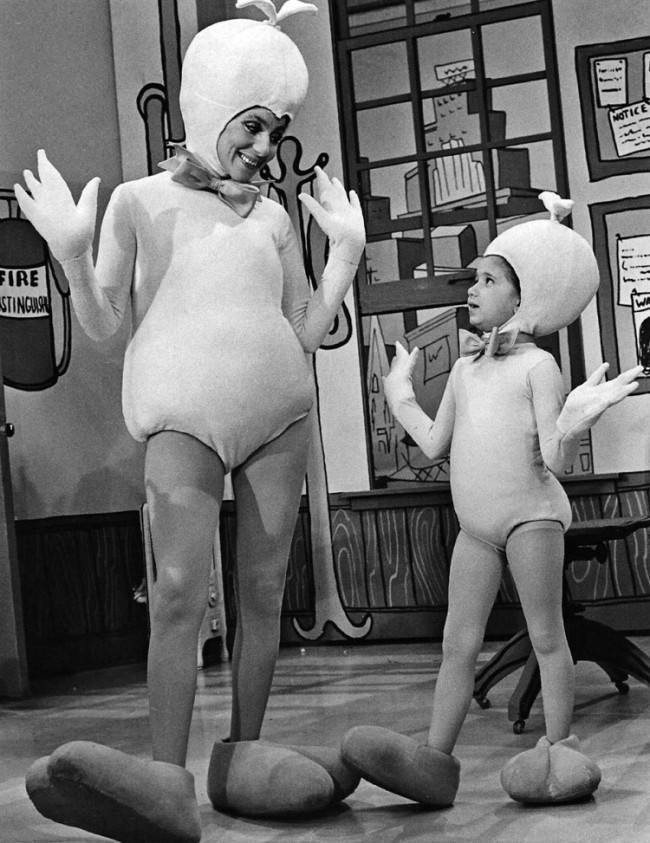
FROM the Sonny & Cher show, here’s mom and Chastity (now Chaz) before the female-to-male gender transition. Is it wrong that I still find Cher sexy in a Tweety Bird outfit? Don’t answer that.
But do enjoy a handful of great publicity photographs from the 1960s – 1980s. Some are odd, some awesome – all are interesting.
Read the rest of this entry »
Posted: 27th, June 2014 | In: Celebrities, Flashback, TV & Radio | Comment (1)
The 5 Greatest Episodes of Buck Rogers in the 25th Century (1979 – 1981)
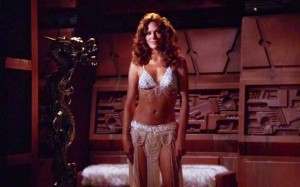
AS impossible as it is for me to believe, Glen Larson’s version of Buck Rogers in the 25th Century (1979 – 1981) turns thirty-five years old this year.
Today, this cult-TV series is often remembered for its spandex fashions, its gorgeous female stars and guest stars, its penis-headed robot Twiki (Felix Silla/Mel Blanc), and its oppressive re-use of familiar or “stock” visual effects in the space dogfights.
Though Buck Rogers in the 25th Century had its weak installments, for certain (like the dreadful “Space Rockers”) it was also a light science fiction series — a romp, essentially — and the series is recalled fondly by fans on those terms too.
Read the rest of this entry »
Posted: 26th, June 2014 | In: Flashback, Key Posts, TV & Radio | Comments (2)
Drive the Chicks Wild! Vintage Menswear Adverts
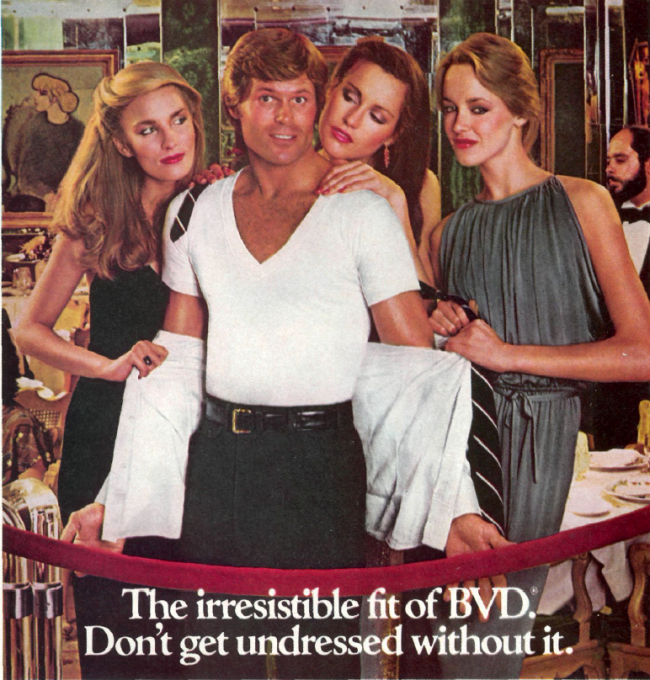
THE obvious way to sell men’s clothing is to proclaim that the garments will somehow turn the average guy into an irresistible Studasaurous. From the late Sixties to early Eighties, when Baby Boomers were in their sexual prime, this marketing tactic went into hyperdrive. Boomers were ready to mate, and menswear adverts proclaimed that their apparel was the gateway to sweet, sweet lovemaking. Here are a few examples.
Read the rest of this entry »
Posted: 26th, June 2014 | In: Fashion, Flashback, Key Posts | Comment (1)
‘The Same Animals…Only Functioning Less Perfectly:’ The Five Most Underrated George A. Romero Movies
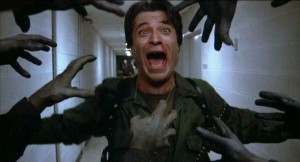
GEORGE Romero’s impressive movie-making career stretches back to the Pittsburgh area in the late 1960s and spans over forty years.
Like many horror filmmakers of his generation, Romero has seen his share of big successes, like Dawn of the Dead (1978) and Creepshow (1982), critical darlings like Martin (1976), cult classics such as The Crazies (1973) and the occasional out-right bomb, like Diary of the Dead (2007).
But several of Romero’s finer films didn’t meet with financial or critical success, and deserve to have further light shone on them. Accordingly, my selections for the most underrated of his feature films are listed below.
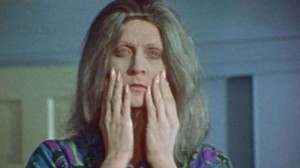
Hungry Wives (1971)
George Romero’s self-described “feminist” horror movie, also known as Jack’s Wife and Season of the Witch, involves a bored suburban house-wife, Joan Mitchell (Jan White) who is only able to define herself in terms of her place in the suburbs as a married woman and a home-maker.
In an attempt to rebel against her “accepted” role in society, Joan delves into witchcraft and then adultery, but the movie’s crafty point is, commendably, that witchcraft is no more defining or self-actualizing for Joan than being a house-wife had been. She has merely changed her demographic affiliation or club, while everything else in her life remains the same
Hungry Wives is so powerfully-wrought because George Romero serves as both editor and director, and his editing flights-of-fancy make the movie’s point plain in terms of visualizations. Early on, for instance, Joan experiences a telling dream in which her husband leads her around on a leash, like a dog. One of the film’s final images reveals Joan involved in a coven ritual, a red rope looped about her neck, and the symbolism is plain: she has merely traded one trap for another. This visual counterpoint is underlined by the counsel of Joan’s therapist, who advises her that she is imprisoning herself, and must change that pattern if she hopes to make her life better.
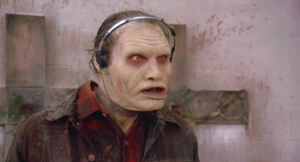
Day of the Dead (1985)
Before 2007 at least, Day of the Dead (1985) was the least-appreciated of the famous Romero living Dead cycle. This lack of approbation was a result, in part,of the film’s overtly and relentlessly serious tone. For all its mayhem and violence, Dawn of the Dead — set at a shopping mall — also had a fun or jaunty side to it. But Day of the Dead proved a totally different animal: a solemn and extremely gory exploration of mankind’s last chapter as the dominant species on Earth.
Rather unconventionally, the movie ends with a committed and likable protagonist, Sarah (Lori Cardille) realizing it is all over but the crying, and essentially giving up the fight so as to live her last years (and the last years of humanity…) on a nice island beach somewhere with two decadent helicopter pilots.
But importantly, Day of the Dead also moves the cycle forward in significant fashion via its introduction of Bub (Howard Sherman), a zombie who has been domesticated, after a fashion, and reveals both rudimentary memory, and rudimentary humanity.
In fact, this lovable zombie shows more humanity than the film’s brutal military leader, Rhodes (Joe Pilato), and thereby suggests that the change in the social order might not be all that bad, if the zombies continue to evolve towards something…civilized.
Finally, Day of the Dead features an epic and awe-inspiring opening,:a view of a city in Florida completely overrun by the living dead. This moment is arguably the biggest in scope of the entire dead run, and establishes brilliantly the zombies’ numerical advantage. As this shot reveals, Day of the Dead is actually the Twilight of Man.
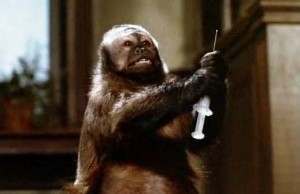
Monkey Shines (1988)
I still remember discussing this Romero horror film at length with visiting movie critic Molly Haskell at the University of Richmond in the late 1980s. We agreed that the critical community had virtually ignored what was a very powerful and very relevant film about human nature.
Monkey Shines involves a man, Allan (Jason Beghe) who is paralyzed in an accident and becomes a quadriplegic. As such, he is provided by his scientist friend (John Pankow) a capuchin monkey named Ella to act as his arms and legs. Before long, Ella and Allan form a close bond of friendship and dependence…but then each begins acting on each other’s emotional states and desires. Soon bloody murder is being committed…but is it at Ellas behest, or Allan’s?
Monkey Shines informs audiences that the “devil” is “animal instinct,” which acts by its “own set of laws,” and then asks the pertinent question: are we that different from the lower animals we treat as pets? Are we truly evolved, or — underneath the surface — are we just as violent and capricious as cousins in the jungle?
The scenes involving Ella in Monkey Shines are convincing and powerful, save for a few moments where an inert stand-in is clearly utilized, and the film’s debate about instinct (an avatar for the human subconscious in some critical way…) makes the film stand out in an era when rubber reality and slasher movies reigned supreme.
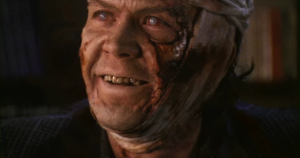
The Dark Half (1993)
Here’s a Stephen King adaptation that almost nobody loves, or even remembers. In The Dark Half (1993) Timothy Hutton plays Thad Beaumont, a writer grappling with his famous nom du plum, George Stark. When Beaumont elects to kill his famous literary name, however, the alter ego comes to life and threatens the writer and his entire family.
A deliberate and modernJekyll-Hyde story, The Dark Half is part of an early 1990s “meta” or post-modern movement in horror. Films such as Wes Craven’s New Nightmare (1994) and John Carpenter’s In The Mouth of Madness (1994) gazed at worlds in which the line between fiction and reality were blurred. The Dark Half treads meaningfully in similar territory, and gazes at the act of writing as literally a physical birth, as an independent creation that – much like a human child – can no longer be fully controlled by its creator.
There’s nothing flashy or expensive about The Dark Half, and the ending is a bit of a bust, but otherwise Romero crafts a thoughtful, low-key horror film that possesses some electric jolts. One early scene, set in an operating room is downright terrifying, and another — with a woman broaching an invader in her dark apartment — also gets the blood flowing.
More than anything, however, The Dark Half explores the idea that the creative act of writing represents a violent assertion of will. “The only way to do it is to do it,” one character notes, and this same determination indeed is what wills the Dark George Stark into the world.

Survival of the Dead (2009)
Survival of the Dead is yet another Romero living dead movie, and another seriously underrated work of art. Since the very beginning of his career in 1968, director Romero has used his zombie saga to explore political and social issues of the time.
For example, Night of the Living Dead speaks to the political violence and upheaval of 1968, and to race relations in America. Dawn of the Dead very much concerns conspicuous consumption and the “Crisis in Confidence” Carter Age. And Land of the Dead (2005) explores post 9/11 territory.
Similarly, Survival of the Dead is a thoughtful, point-for-point allegory for American involvement in the Iraq War. Unfortunately, horror movie fans were too busy complaining about CGI blood effects to notice the movie’s clever thematic framework.
In short, Survival of the Dead involves a refugee, O’Flynn (Kenneth Welsh) — the fictional equivalent of Ahmed Chalabi — who tricks American armed forces into fighting his war for him, and ousting his enemy, Muldoon (Richard Fitzpatrick) — a Saddam Hussein figure – from the land that he would like to lead, paradise-like Plum Island.
Obligingly the National Guard moves in — guns blazing — only to find that matters aren’t so straight-forward. The soldiers have become involved in a pissing match that, ultimately, doesn’t concern them or their well-being.
The film features an Old West sort of milieu on Plum Island, with rivals O’Flynn and Muldoon (Richard Fitzpatrick) wearing cowboy hats and riding horses while zombies (here called Dead-Heads) are trapped in the nearby corral.
Again, Romero’s thoughtful set-up makes it impossible not to think of the post-911 “dead or alive” rhetoric from the Bush White House. The film’s final imagery — which depicts cowboy zombie versions of O’Flynn and Muldoon trying to kill each other under a bright moon — makes one despair that human nature is ever going to change.
With neo-con dead-enders everywhere on cable news stations this week attempting to re-enlist America in the war in Iraq a decade later, Survival of the Dead is more relevant than ever. Accordingly, this Romero film is really about discredited zombie ideologies that have long outlived their usefulness, but which keep coming back from the dead to threaten the rest of us.
Posted: 20th, June 2014 | In: Film, Flashback, Key Posts | Comment
8 Reasons Children of the 1970s Should All Be Dead
The way things are going, every kid is going to go to school wearing bubble wrap and a helmet. Back in the 1970s (and earlier), parents didn’t stress about our health and safety as much as they do today. It’s not that they cared less – they just didn’t worry compulsively about it.
Parents of 2014 need to be reminded of how less restricted, less supervised, less obsessively safety-conscious things were… and it was just fine.
1. JARTS: IMPALING ARROWS OF DEATH
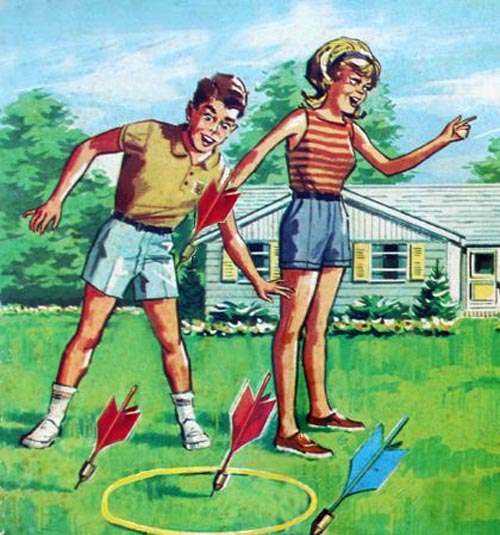
Can your mind comprehend a more deadly toy than a weighted spear that kids hurl through the air like a missile? No one ever obeyed the actual manufacturer’s rules, we just flung these damn things everywhere. We threw them. They stuck where they landed. If they happened to land in your skull, well, then you should have moved.
After roughly 6,700 emergency-room visits and the deaths of three children between 1978 and 1988, they finally outlawed Jarts on December 19, 1988. I suppose it needed to be banned, but a part of me is sad that kids today won’t have the battle scars and Jart survival stories we had. Goodbye Jart – you were an impaling arrow of death, but I loved you anyway.
2. LOST AND NOT FOUND: SEAT BELTS
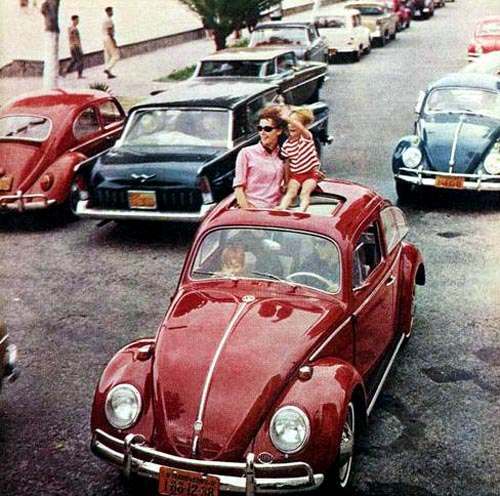
Cars came with seat belts in the 1970s, but no one used them except maybe out of curiosity to see what it was like to wear one. Of course, you’d have to fish them out of the deep crevice of the backseat cushion where they often came to rest, unwanted and ignored.
The only “click” heard in the 1970s automobile was your dad’s Bic lighting up a smoke with the windows rolled up. (cough!)
I should also mention that, not only were there no seat belts, child seats were nowhere to be found. Whether it was the front seat of your mom’s station wagon or her bicycle, chances are, you were entirely untethered.
3. SEMI-LETHAL PLAYGROUNDS OF HOT METAL
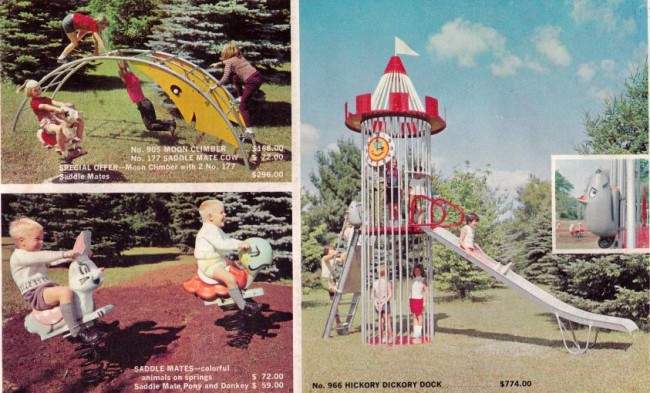
Remember when playgrounds were fun? Sure, there was a pretty good chance you’d be scalded by a hot metal slide, or walk away with tetanus, but that’s what memories are made of.
The ground wasn’t coated with soft recycled rubber or sand as most are today – they were asphalt. Remember being hurled from a spinning merry-go-round, then skidding across the gravel at full speed? Good times.
I remember my school playground had a metal ladder “wall” that I swear went up three stories – it didn’t connect to a slide or anything. It was literally a ladder to the sky. I remember fully believing the oxygen was thinner at the top. One false move and I’d have been a flesh colored stain on the asphalt.
According to the New York Times we are making playgrounds so safe that they actually stunt our kids’ development. So, while blood was spilt and concussions were dealt on the playgrounds of the 1970s, we were at least in a developmentally rich environment – and we had the bruises and scabs to prove it.
4. PRECIOUS LITTLE SUN PROTECTION
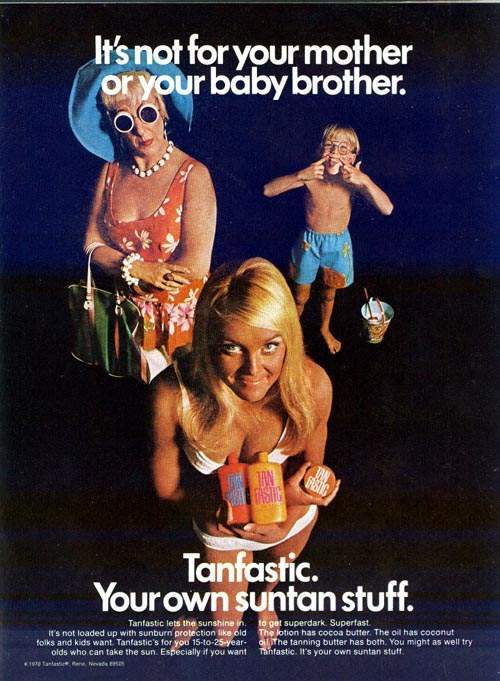
“Tanfastic lets the sunshine in. It’s not loaded up with sunburn protection like old folks and kids want. Tanfastic’s for you 15-to-25 year olds who can take the sun. Especially if you want to get superdark. Superfast.”
Back in the 70s, your goal was to get as brown as your skin would permit. Sun BLOCK or sun SCREEN was basically nonexistent. You wanted to AMPLIFY your rays, so women typically lathered on Crisco and baby oil to get that deep baked look.
For the kids, SPF numbers hovered around 2, 4 and 8. The idea that you would spray an SPF of 50 or even 30 wasn’t even an option, except perhaps from medical ointments prescribed for albinos.
5. HELMETS: FOR THOSE WITH MEDICAL CONDITIONS ONLY
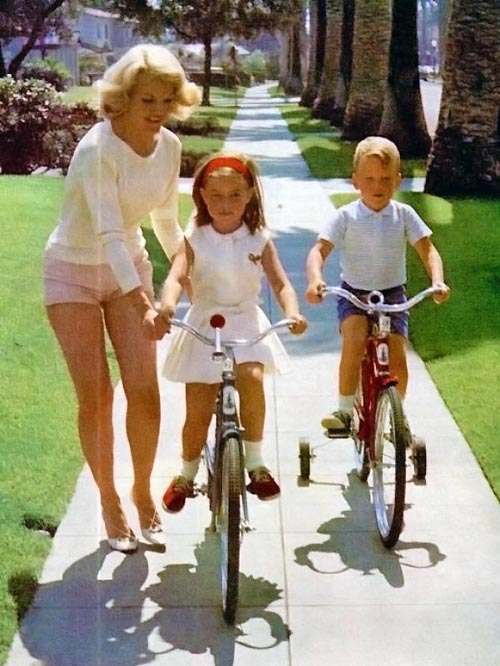
Whether you were riding a bike, roller skating, or skateboarding, one thing was for certain: you were not wearing a head protection. You would have been looked at as a sideshow freak by other kids, and parents would assume you had some kind of medical condition.
6. IGNORED AND UNATTENDED ON THE REGULAR
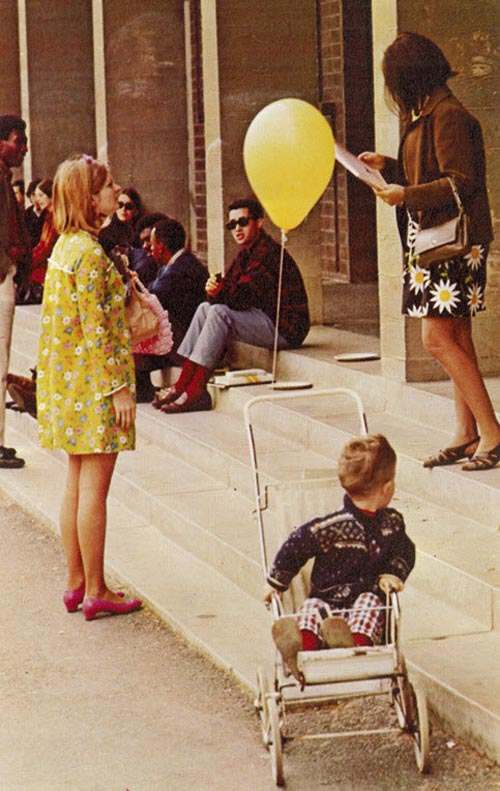
Hey, who’s watching the kid in the stroller? YOU MUST HAVE YOUR EYES ON THE KID AT ALL TIMES OR ELSE HE WILL DIE!
My mother routinely left me alone in the car at a young age while she ran errands. Today, this will literally get you arrested. You see, once upon a time it was okay to leave your kids for long periods without supervision (remember the so-called “latch-key kids” of the 70s?), or let them free roam without constant surveillance. Today, parents won’t let their kids go out to get the mail alone, and any fun with friends has to be scheduled, closely monitored “play dates”.
On summer break or weekends in the 1970s, parents kicked their kids out the front door and didn’t let them back in until the sun went down. “Go play,” were their only words, and you were left to your own devices for hours upon hours. Neighborhoods looked like Lord of the Flies.
7. ROUTINELY ALLOWED TO GET SERIOUSLY HURT
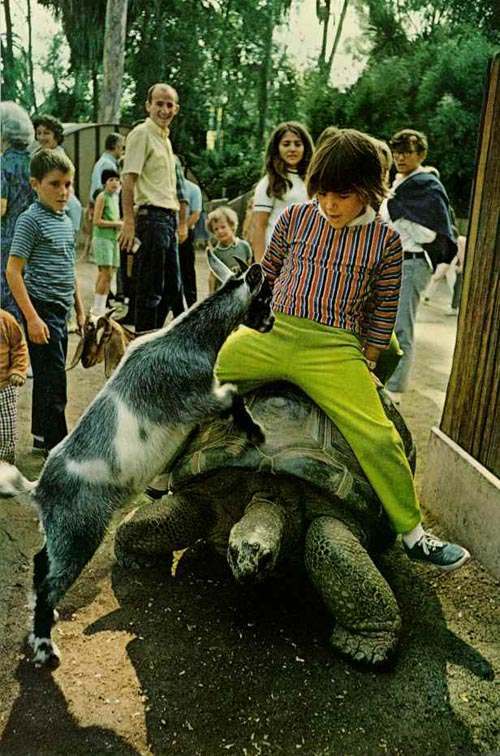
This poor kid is about to get rammed in the nuts by a goat, and the nearby adult isn’t the least bit concerned. In fact, he finds this all incredibly amusing! As hard as this is to believe, but when kids got hurt back then, adults didn’t come running with first-aid kits. More than likely you’d be left alone with your pain, with no alternative but to get over it.
In the 70s, parents watched their offspring fall from trees and fall off bikes with a smile.
8. SECONDHAND SMOKE EVERYWHERE
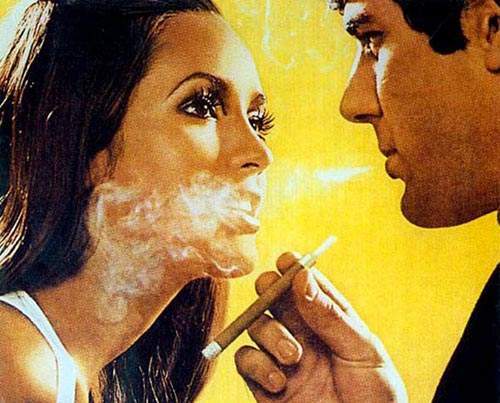
From airplanes to your family car, it seemed the world of the 70s was shrouded in a haze of cigarette smoke. It wasn’t just the fact that many more people smoked, it was the absolute 100% lack of concern for those that didn’t, including children. Teachers smoked, doctors smoked, your parents smoked…. and they didn’t take it to a secluded smoking area, they did it right in your face.
Please don’t interpret this as condoning it. There’s no question that engulfing your child in a thick carcinogenic cloud isn’t a good idea. I’m just stating facts – this is the world we lived in. It was full of adults who didn’t seem to have anxiety attacks over our safety, and we turned out just fine…. right?
Posted: 9th, June 2014 | In: Flashback, Key Posts, Reviews | Comments (442)
The Top 10 Lyrical Low Points of the 1970s
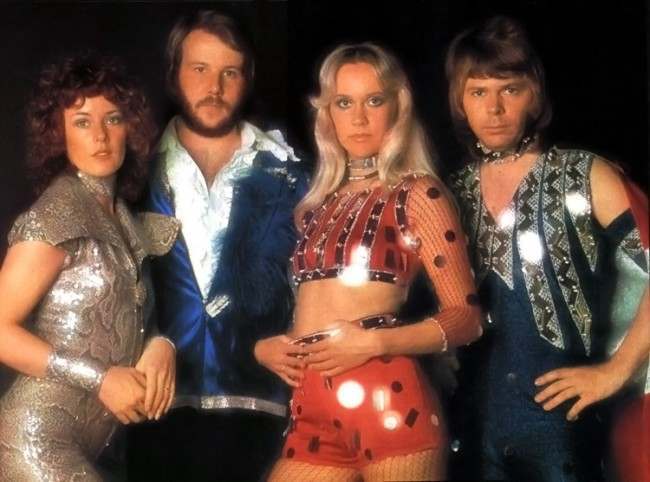
BACK in January, we covered The Top Ten Lyrical Low Points of the 1980s. Well, it’s time to tackle another decade – the 1970s. While there were certainly a lot of good songs with good lyrics recorded during this period, there was a metric f**k-ton of bad ones as well. But despite the enormity of the task, we’ve waded through it and plucked out the worst of reasonably well-known songs, and here they are…
Read the rest of this entry »
Posted: 30th, May 2014 | In: Flashback, Key Posts, Music | Comments (8)
The Devil Made Them Do It: The Five Best Exorcist (1973) Knock-Offs
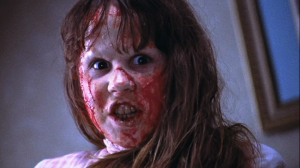
WILLIAM Friedkin’s The Exorcist — based on the best-selling novel by William Peter Blatty — quickly became one of the first genre blockbusters of the seventies, and a generational touchstone to boot.
The Exorcist also represented a new brand of horror film, in a sense, because it lacked a familiar “monster” like Dracula, the Wolf Man or The Frankenstein Monster, and it didn’t depend on well-known genre personalities, like Vincent Price, Christopher Lee, or Peter Cushing, either.
Read the rest of this entry »
Posted: 29th, May 2014 | In: Film, Flashback, Key Posts | Comments (6)
Hunter S Thompson’s Daily Diet Regime: Chivas, Dunhill, Cocaine
HUNTER S Thompson’s daily routine:
Posted: 27th, May 2014 | In: Celebrities, Flashback | Comment
Your Official Guide To 1970s CB Slang
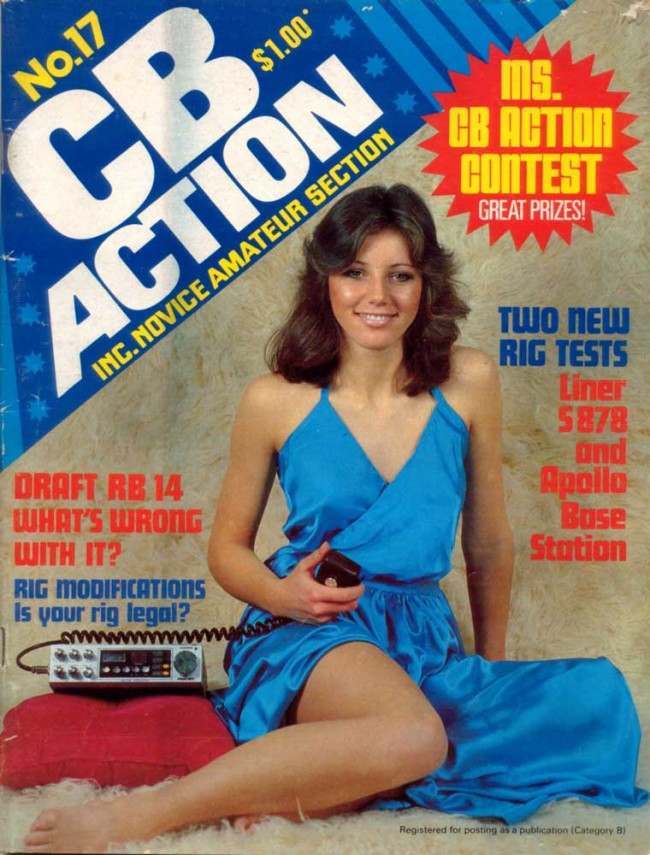
THE INTERNET has created its own slang, saturated with efficient abbreviations and a constantly evolving jargon that only insiders know. As novel as this seems, just a few decades ago there was another trendy lingo sprung from a new technology: CB Slang.
Citizen’s Band radio had been around since the 1950s, but you had to be licensed and had to use a registered call sign. However, once the CB became widely used on the interstates throughout the US, all rules were thrown out the window. Truckers started making up their own handles and things got interesting.
Read the rest of this entry »
Posted: 27th, May 2014 | In: Flashback, Key Posts, Technology | Comment (1)
Those Fabulous and Frightening 1970s Kitchens

Read the rest of this entry »
Posted: 19th, May 2014 | In: Flashback, The Consumer | Comment
The Top 10 Greatest Afros of Yesteryear
IN the 1970s, the glorious afro emerged into mainstream culture as an affirmation of Black African heritage and a rejection of Eurocentric standards of beauty. The popularity of this “natural” hair style among blacks is often traced back to activists Angela Davis and Stokely Carmichael. After their radical hair statement hit televisions screens across the US, it didn’t take long for it to become widely accepted. “Say It Loud, I’m Black and I’m Proud,” sang James Brown, who had also adopted the look.
And “the look” actually had many variations. We tend to think of the generic globe afro, but the styles in the 70s came in a dazzling variety…

Make no mistake, the afro is still alive and well; however, it by no means is at the level of popularity it enjoyed in the 1970s. So, in tribute to the Golden Age of the Afro, here are the top ten in no particular order.
Oscar Gamble
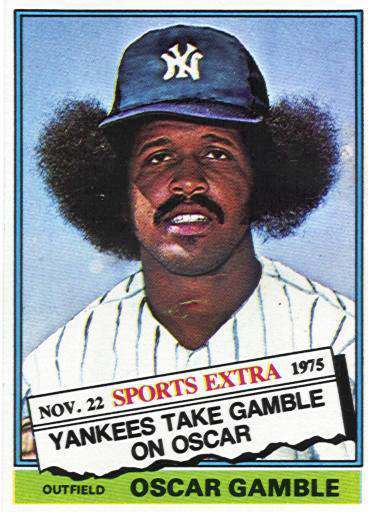
Gamble was a decent baseball player, but nothing close to Hall of Fame level. However, he is perhaps better remembered than most of the names lining the halls of Cooperstown. This unique notoriety is due to a couple Gamble legacies.
First, there’s the infamous quote: “They don’t think it be like it is, but it do.” Originally a reference to racism in major league baseball, it has become a successful meme and viral quotation on the internet.
Second, there’s the mighty afro which Yankee’s manager, George Steinbrenner, forced him to crop. It was among the biggest in the sporting world, but it still doesn’t account for why he is so indelibly linked with the hairstyle. Look up any article on the subject and you will undoubtedly see his name brought up. And so, here he is again on Anorak, further cementing his status as symbol and spokesman for the mighty ‘fro.
Tamara Dobson
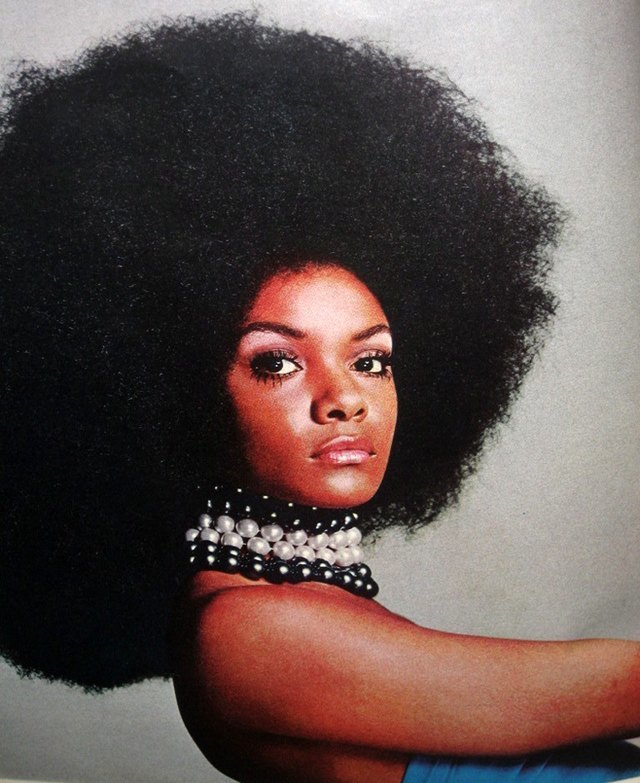
After kicking ass and taking names in Blaxploitation flicks like Cleopatra Jones (1973) and Cleopatra Jones and the Casino of Gold (1975), Dobson (unlike her afro wearing counterpart, Pam Grier) faded into obscurity in the 1980s. But her fro will live on forever.
But wait, there’s another Tamara Dobson afro connection…
Cornell Traeger
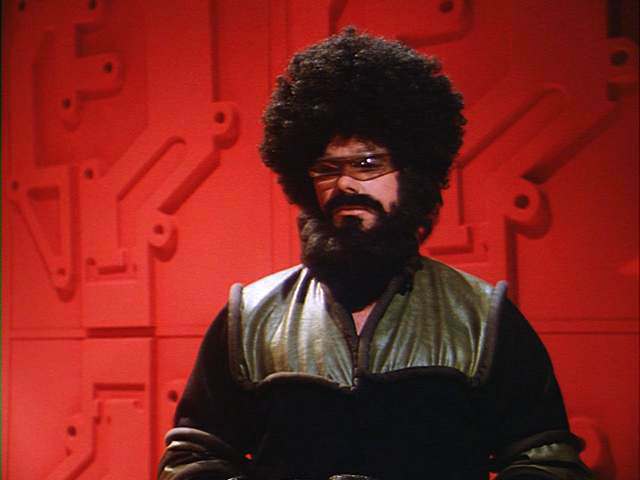
In the Buck Rogers in the 25th Century episode “Happy Birthday, Buck” (Season 1, Episode 15), Tamara Dobson played a non-afro wearing “psychic courier” named Raylyn. And while Tamara, herself, didn’t unleash her mighty ‘fro on the show, her co-star in this episode most certainly did. The incognito assassin, Traeger (played by Peter MacLean), sports what may be the most insanely terrible afro to ever grace the small screen.
The Sylvers
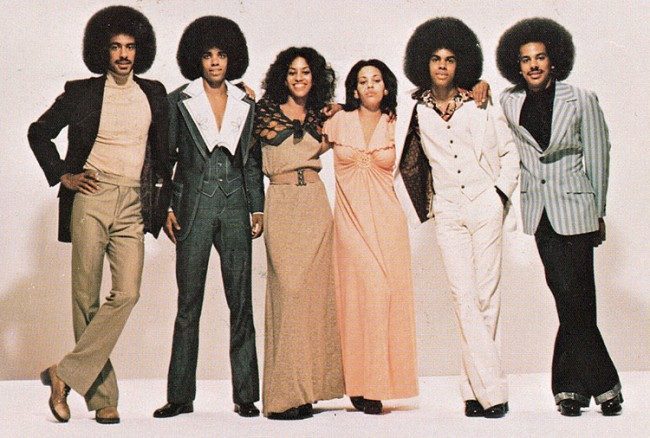
There was an embarrassment of riches of Afrotastic musical acts in the Seventies, so it’s hard to choose the best. The Jackson 5 sported a worthy lineup of ‘fros, but the Sylvers kicked it up a notch and earns the prize.
Bob Ross
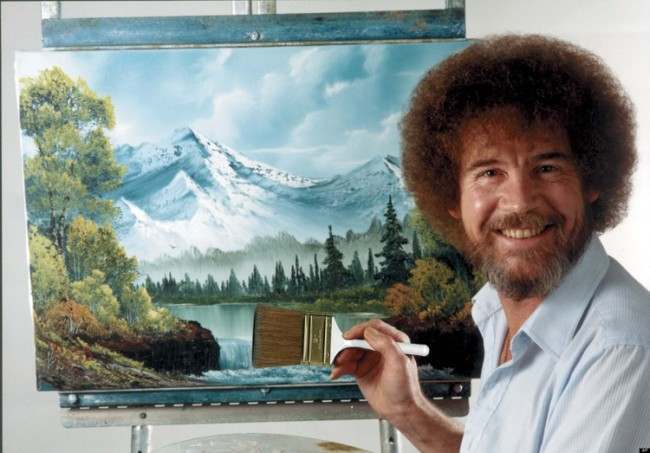
Bob Ross’ show transcended painting – it was a life affirming stroll through inner peace. It was a land where “mistakes” were actually “happy accidents”. You could do no wrong in this world. Bob’s soft tones lulled your mind into a state of tranquility only achievable elsewhere via an overdose on Benzodiazepines .
And then there was the Ross ‘fro where literally small woodland creatures would make their home. His afro was as much a part of nature as the “happy trees” in his paintings. Indeed, Bob Ross’ hair wasn’t as much a fashion statement as it was a living, breathing ecosystem.
Misty Knight
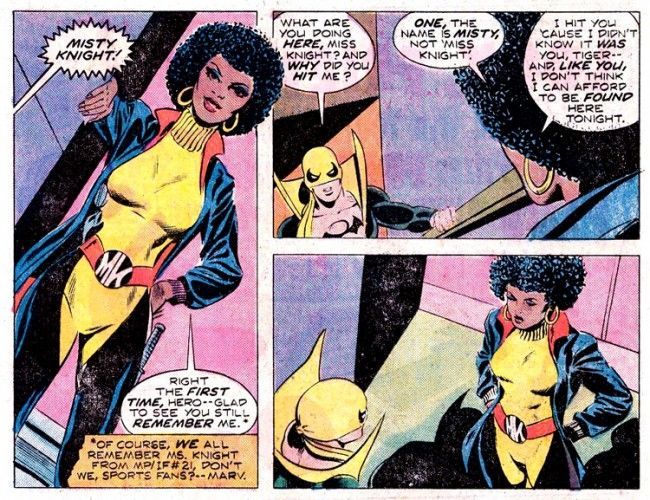
Luke Cage (AKA Power Man) and Black Lightning were some badass black superheroes, but neither had an exceptional ‘fro. So the honor should go to Misty Knight, a former police officer and kung-fu specialist with a bionic hand given to her by Iron Man. She always played a supporting role in her various comic book appearances. Her most notable moment came when she had an inter-racial relationship with Power-Man.
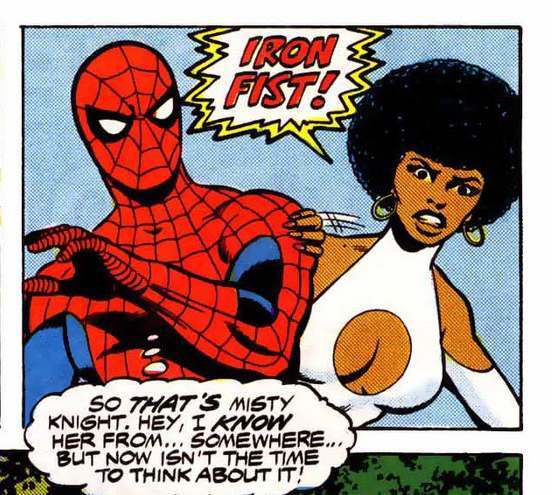
In later years, her costume got a change, exhibiting a “cleavage window” made famous by Power Girl. But while her costume may have changed, her ‘fro mercifully remained intact.
Angela Davis

You can’t have a list of top afros and not name one of the main individuals responsible for popularizing it. Whether or not you subscribed to her radical views and pro-Communist stance, her ‘fro was all over the airwaves, hurtling the style into the mainstream.
Billy Preston

There may be a number of people who earned the right to be called the “Fifth Beatle”, but only one sports an afro big enough to engulf a small child. As Stuart Mackenzie says in So, I Married an Axe Murder: “That’s a huge noggin. That’s a virtual planetoid… Has its own weather system.”
Leo Sayer
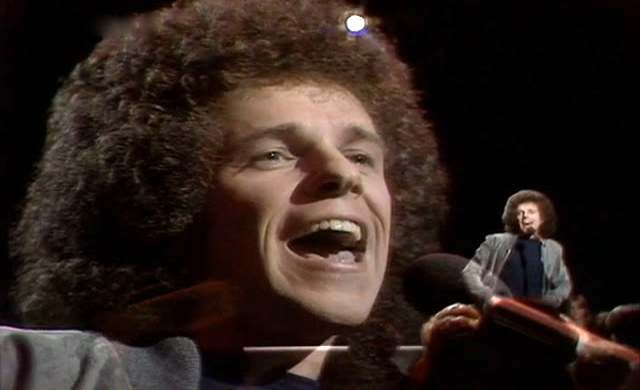
I could have easily chosen Barbara Streisand, who had a grand Jew-fro in the 70s. Conway Twitty, believe it or not, also wore a white-person ‘fro which was nothing to sneeze at. But Leo Sayer wins based on both circumference and flair. His was akin to Richard Simmons’, but without the male pattern baldness setting in.
Cicely Tyson
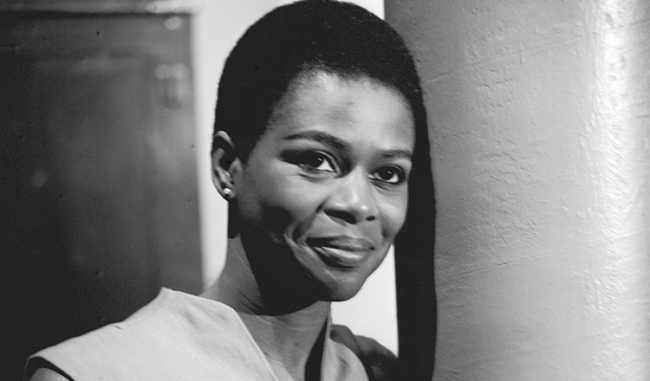
Sure, this close-cut afro didn’t have the volume, but it was a groundbreaker. Tyson donned the natural style on the TV show East Side/West Side long before it achieved mainstream acceptance. Audiences were appalled and outraged, but it proved to be a huge stepping stone in the emergence of the afro in popular culture. Sure, Cicely has tons of awards and accolades for her acting, but this little accomplishment deserves some kudos as well.
Posted: 16th, May 2014 | In: Celebrities, Flashback, Key Posts | Comment (1)
Vintage Adverts : Feminine Hygiene-A-Go Go!
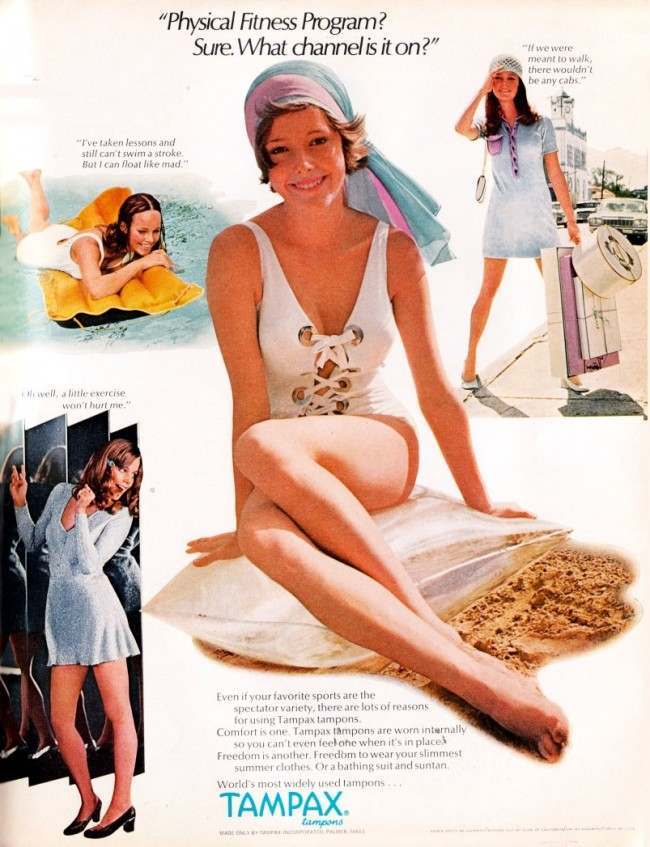
FEMININE hygiene adverts prior to the late 1960s basically depicted menstruation as a shameful curse, a sickening burden upon womankind. By the time the Baby Boomers started needing these products en masse, a revolution in feminine hygiene was underway. There was still a sense of shame in these adverts, but now it was all about offering new features (i.e. “It’s flushable!). While this may not be the most appealing topic you’ve ever read about, the advertising is still rather interesting and even a little humorous. Take a look at a few examples.
“Gotta Get This Tampon Out Of Sight!” – Pursettes
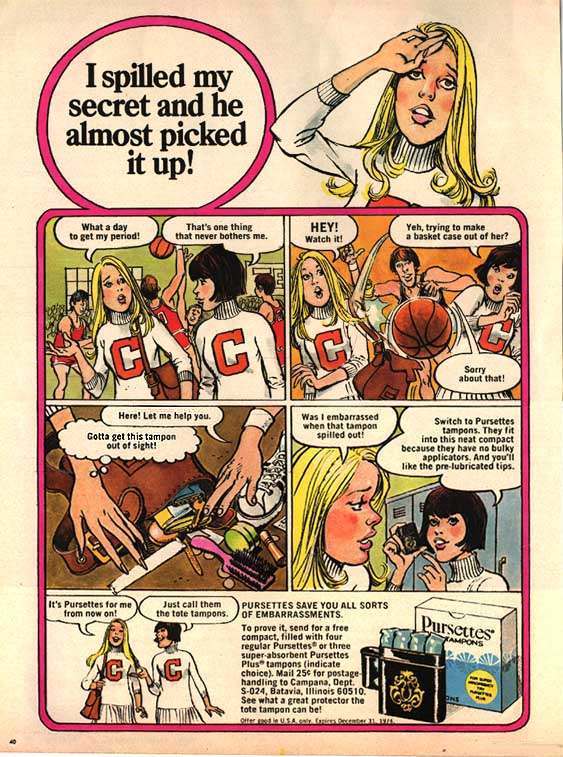
This tale of woe recounts the abominable shame experienced by a cheerleader when her purse hits the ground spilling out (gasp!) tampons. What should she do? Transferring to another school is such a hassle. Luckily, her friend has Pursettes which keep her shameful secret hidden under wraps. “Just call them the tote tampons.”
“That’s why so many women just like you are switching to it.” – Playtex Self-Adjusting Tampons
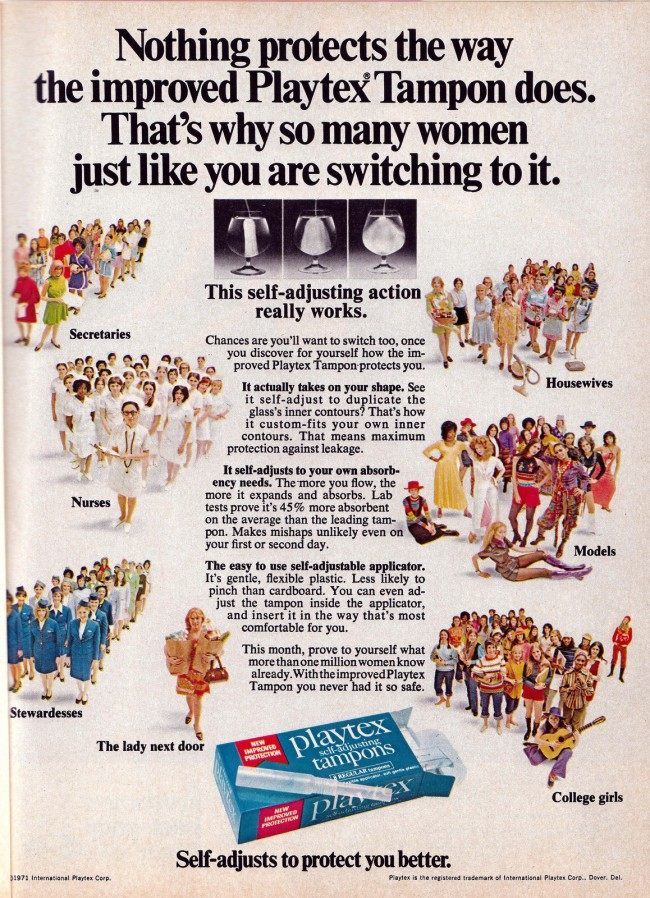
I love how this is supposed to be an empowering advertisement, yet it totally undermines itself by its list of stereotypically feminine careers. It’s attempting to illustrate that the Modern Woman has modern needs, and Playtex is just the product to keep up with the changing times. Yet, the various groups of women they list are downright hilarious: “Secretaries, Nurses, Stewardess, The Lady Next Door (WTF?), College Girls, Models, Housewives”. They left out waitresses and strippers.
“Dear Mother Nature: Drop Dead!” – Kotex
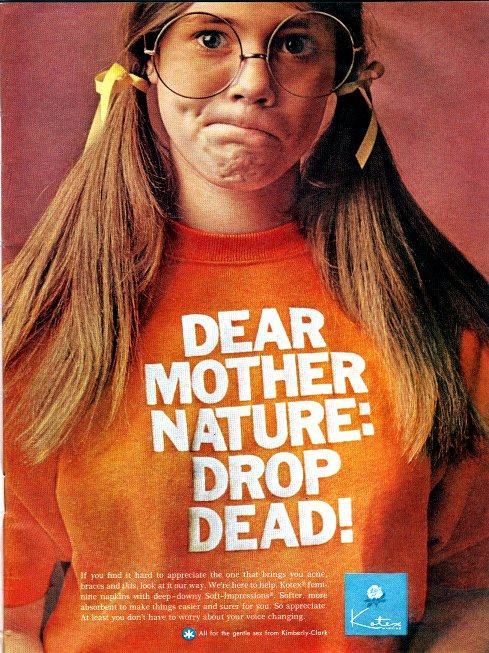
The last line reads: “At least you have to worry about your voice changing.” This is a consolation of the sorriest sort. Nearly a lifetime of menstruation versus a month or two of crackly vocal cords…. Hmmmm – which is worse? On a side note: the lens diameter-to-face ratio of those glasses is the largest I have ever seen. Simply breathtaking.
“It stayed in place, even when I was jumping streams.” – Stayfree Maxi Pads
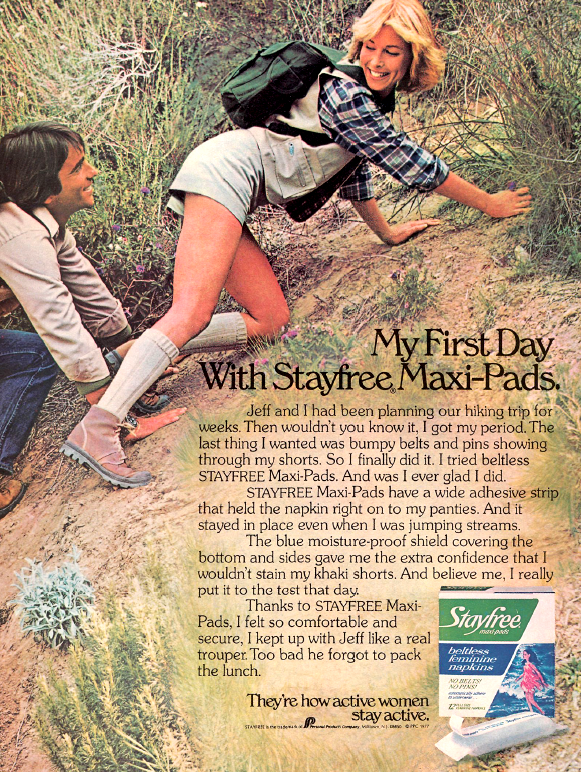
That’s a bold woman – her first day with Stayfree Maxi Pads and she’s sticking her ass directly in his face? Just a thought: maybe he goes up the hill first. The ad ends with “Too bad he forgot to pack the lunch”. Maybe he didn’t forget – he just lost his appetite.
“If you’re old enough to pick your clothes, you’re old enough to pick your sanitary napkin.” – Modess
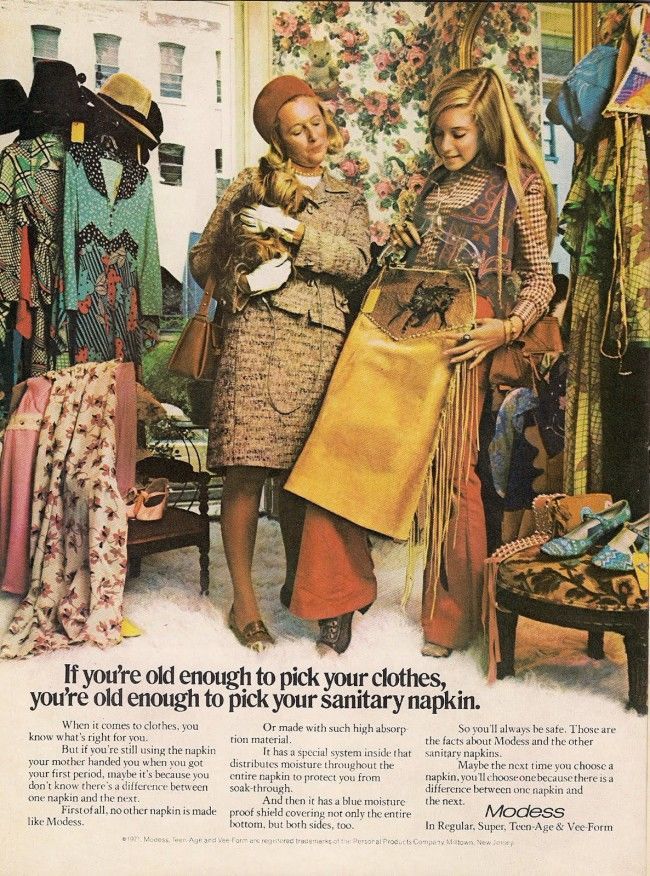
Advertisers aren’t stupid. They knew the Baby Boomers represented the largest population bubble in the history of the United States. Subsequently, ad agencies were scrambling to produce advertising geared toward this gargantuan money pot. The Modess advert above heavily features the new hippie chic whilst highlighting how grossly antiquated the older generation is. Do you want to buy your sanitary napkins based on the opinion of your crusty archaic mother who seems so hopelessly out of place amongst counter-culture swag? I didn’t think so.
“Whee! They’re Flushable, Too!” – New Freedom Kotex
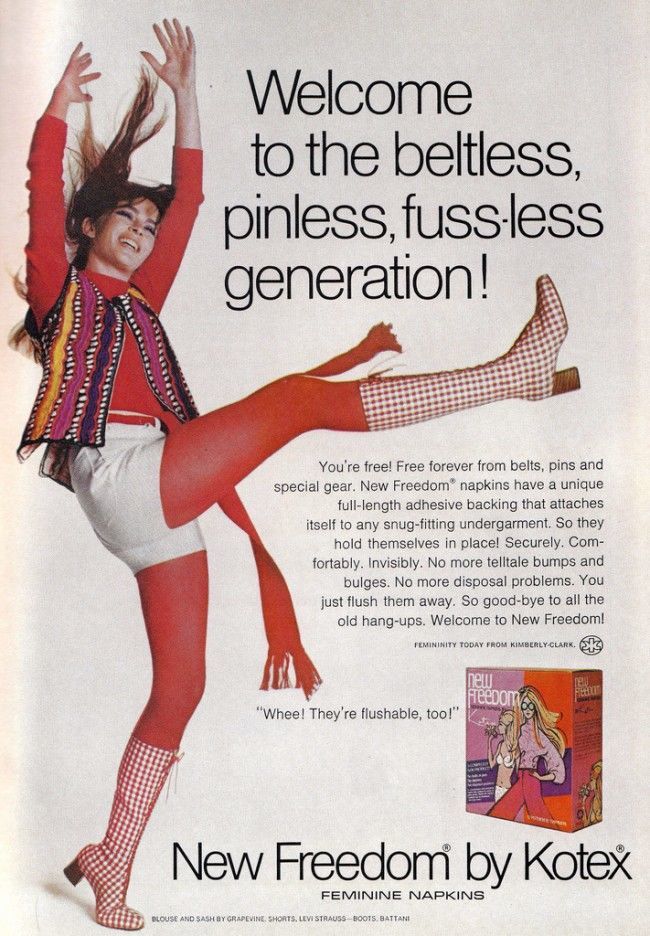
Yet another advert marketed directly to Boomer youth. Truth be told, there actually was a lot to be excited about. If you’re familiar with the previous generations’ feminine hygiene equipment, you’ll know there was cause for celebration. That stuff was a bulky mess; it had barely improved from the Paleolithic days of using rolled grass and roots. It consisted of various rigging using straps and belts in conjunction with giant swaths of absorbent linens. You can see why a flushable inconspicuous napkin would be a godsend.
“It’s perfect for beginners like us!”Petal Soft Tampax
Petal Soft Tampax
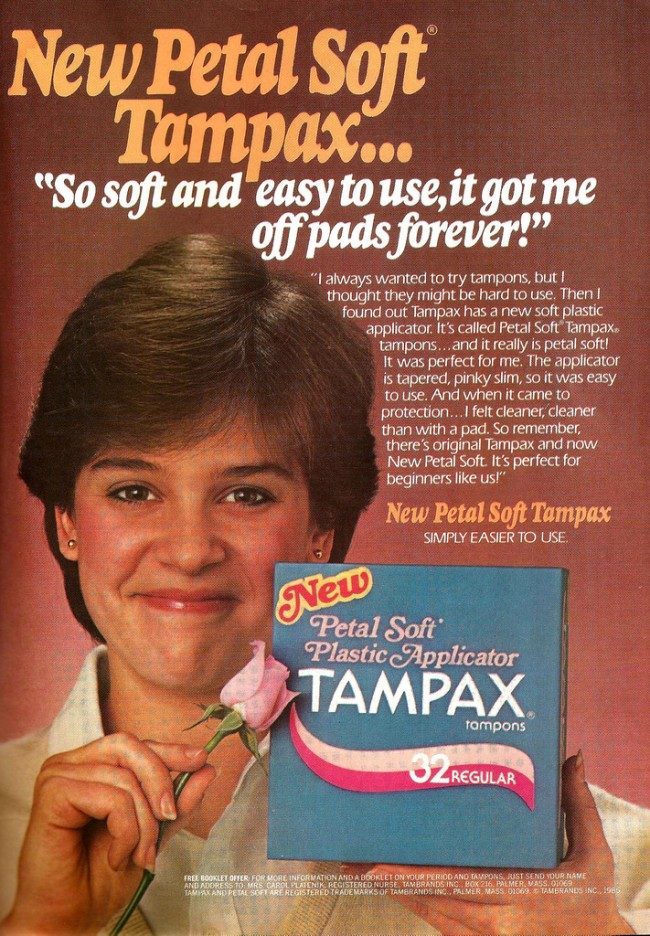
This ad comes from a 1986 issue of 16 Magazine, about a year after Tampax broke the ultimate taboo on American television: It used the word “period”. Specifically the TV ad said, “It will change the way you feel about your period.”
When questioned about their startling expletive, the Tampax ad agency responded beautifully:
It’s a natural evolution. Over the past five years everyone has gotten more straightforward. It just doesn’t make sense any longer to show a woman in a long white dress, drifting through a field of wildflowers, saying something like, ‘It makes me feel fresh.’
Well said.
Posted: 14th, May 2014 | In: Flashback, Key Posts, The Consumer | Comment

